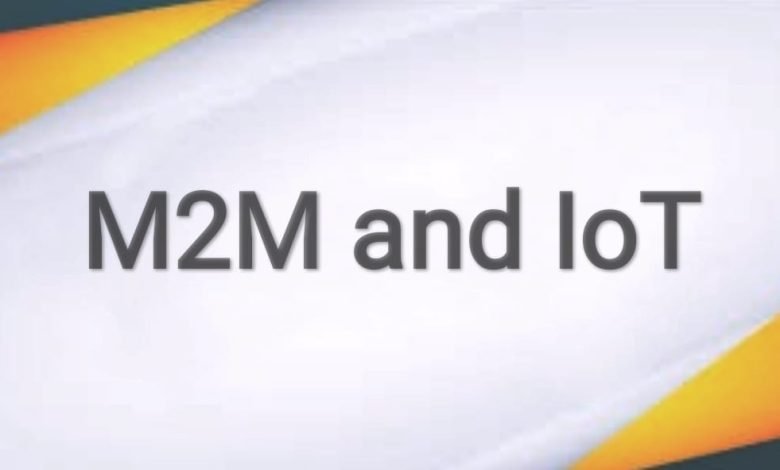
What is the difference between M2M and IoT?
If you are new to the technology industry, you may wonder what the difference is between M2M and IoT. To put it simply, M2M is a method of communication between two or more electronics-enabled systems, whereas IoT is the ecosystem of connected physical devices.
In this article, you’ll learn the main differences between these two concepts. To better understand the difference, we’ll look at the main differences between M2M and IoT and compare their respective benefits and drawbacks.
M2M is a process of communicating among two or more electronics-enabled systems
The benefits of M2M technology include improved customer service and improved maintenance of production equipment. In addition, these systems enable companies to identify equipment that may need restocking or maintenance before it breaks down, which saves money and time. M2M technology also has surprising applications in daily life, such as smart asset tracking software that can determine when a customer will receive their order.
There are a number of challenges associated with establishing an M2M ecosystem in mobile networks. M2M traffic differs from traditional smartphone traffic, which is typically bursty and dominates the downlink. Consequently, networks must optimize E2E network architectures to support the high volume of M2M devices. Several standardization bodies are working on new architectures.
Telemetry, which allowed remote sensors to communicate with a central processing center, was originally developed in the 1920s. Its applications impacted production and manufacturing, as it allowed different systems to communicate with each other and enforce safety procedures. However, this system was not standardized. Wireless technology and cloud computing made it easier for companies to use M2M in industrial settings.
Smart cities and intelligent transportation systems are just a few of the emerging M2M applications. These systems are expected to be deployed in a variety of sectors, including automotive, security, logistics, and e-healthcare. M2M solutions can be used to automate many processes, monitor business assets, and even generate new revenue. And as these systems become more sophisticated, the opportunities for M2M solutions are nearly limitless.
Checkout- M2M sim data plans
M2M is a subset of the Internet of Things
M2M is a subset of the Internet of Things, which was first described in 1999. Today, the Internet of Things refers to a global network of connected devices. In this network, devices can communicate with each other through wireless or wired communication channels. These connected devices can collect and share data, and eventually create an intelligent network of things. It has a number of applications, including vehicle tracking and point-of-sale systems.
M2M has also come a long way since the emergence of the IoT. It uses many of the same connectivity technologies and solutions as the IoT, such as cellular modems. The MTC-H5-B01-US-EU-GB MultiConnect Cell 100 Series cellular modems are well suited for M2M applications, and can be used for remote patient monitoring and process automation.
In addition to being a crucial part of the Internet of Things, M2M can be a powerful tool for enforcing payment plans. For example, a company called M-kopa in Kenya uses M2M to turn off solar devices in the event a customer does not pay. In some cases, M-kopa even has the capability to turn off customers’ solar devices remotely, through the use of a SIM card.
IoT is an ecosystem of connected physical devices
The Internet of Things (IoT) is a system of interconnected physical devices, usually with a network connection. These devices may have a variety of functions, from making a light switch on your phone to controlling a smart thermostat. Devices can be anything from a kid’s toy to a driverless truck. Some larger objects may contain many smaller IoT components, such as a jet engine, which has thousands of sensors. Smart citiesproiectele can fill entire regions with sensors and other devices.
The Internet of Things comprises a variety of different technologies, including sensors, remotes, networks, gateways, analytics, data storage, and security. There are three major layers of the IoT ecosystem: the physical layer, which contains sensors, the network layer, which transmits data collected by the physical layer, and the application layer, which defines interfaces and protocols for data exchange. Remotes, which enable control of IoT devices, include smartphones, tablets, PCs, smartwatches, connected televisions, and nontraditional remotes.
In addition to helping people stay in touch with their doctors, IoT devices on wearables may help elderly people avoid accidents and injury. Many of these devices even contain sensors that track heart rate and other parameters. IoT devices may also improve communication among family members and improve two-way facilities. While these benefits are many, IoT has a long way to go. But for now, there are a few important issues to consider when exploring the possibilities of IoT in your business.
Benefits of IoT
The benefits of IoT to a business will depend on how you implement it. Agile, efficient, and connected devices are typically the top considerations for IoT deployment. These technologies are increasingly connect with each other, and this means that organizations will need to make changes to their systems to be more competitive. IoT is a complex ecosystem with a variety of unique security challenges. Ultimately, it’s a good idea to start preparing now for IoT in your business.
With all of the data coming in from IoT devices, the threat of IoT security becomes a greater concern. If hackers were able to gain access to wireless routers, smart cars, and even heart monitors, they could steal private information. In the connected world, one security flaw could compromise personal data privacy or bring an enterprise down and halt operations. However, these challenges are only the beginning of IoT security.
In March 2016, the U.S. Senate passed a resolution that recognized the need for a National Policy on IoT. It recognized the importance of privacy and security, and directed the Federal Communications Commission to study whether more spectrum is needed for IoT. While it’s still early days, a recent study showed that a majority of smart speakers in the US market have a higher security rating than their predecessors.
IoT is a more commercial term for M2M
The Internet of Things (IoT) is an ecosystem of connected devices that work together to make life easier. Examples include remote fuel monitoring, scheduling, and heating systems. Industrial IoT can even turn off lights when a person leaves the room. Machine-to-machine (M2M) communication is the process of connecting two or more devices via the Internet. This type of communication is usually short-range and uses low-power wireless communications technology.
The first step of the IoT journey begins with an intelligent connected device. These devices may range from simple sensors to complex capital equipment. But they all share the common requirement of monitoring data streams and taking action based on that data. These requirements can be local, such as operating in an off-line state, or global, such as a smart grid. Its connectivity can enable data collection, analytics, and improved business processes.
While M2M solutions were the foundation for the IoT, the technology has evolved to make it more efficient and useful. Its growth has spurred technological advances in businesses, individuals, and entire societies. The growth of IoT is fueled by the mushrooming population of connected devices. While M2M may have been the catalyst for the evolution of M2M, the Internet of Things would not exist without it.
Applications of IoT
Another example of an IoT application is wearable health devices. These devices are equipped with sensors and send the data they collect to a cloud. Algorithms then analyze the data and send alerts to the wearer or doctor. This type of communication is only possible with IoT. Other common applications of IoT include smart agriculture sensors and connected electric scooters. These devices can monitor trends and make recommendations based on that data.
With this kind of IoT, manufacturers and owners can track usage and prevent machine failure. Using an IoT platform, for example, can send alerts when a dangerous level has been reach and prompt the user to shut down the asset. That too in minutes, not hours or days. In addition to facilitating the decision-making process, it also speeds up the repair process and pushes out security patches. Moreover, the internet is becoming an integral part of our daily lives, and it’s possible to collect a great deal of data from it.
One application of IoT is in hospitals. In hospitals, patients’ vital signs are constantly monitor through smart devices and can even trigger alarms throughout the facility. Moreover, they can also communicate with Fitbit devices through Bluetooth 4.1. These systems can also control interior doors and let emergency personnel enter buildings. This way, hospitals can respond much faster to emergency situations. A hospital can also cut down on the cost of repair by improving efficiency.



